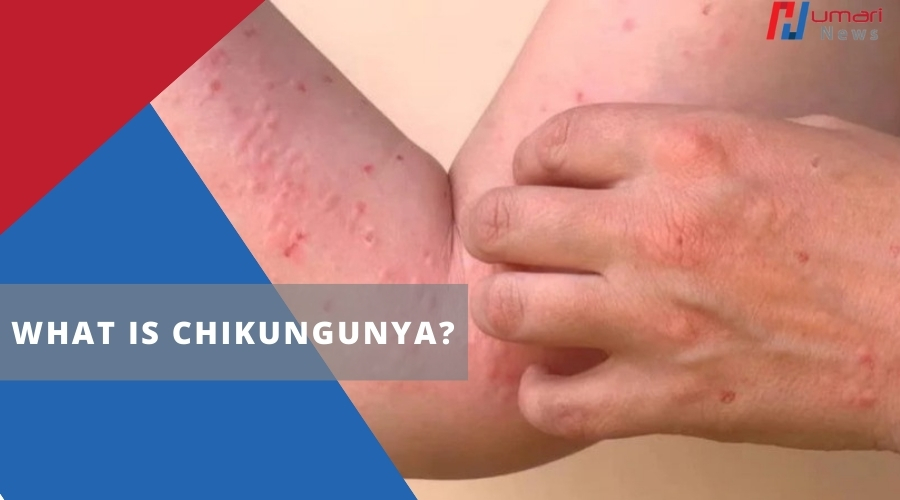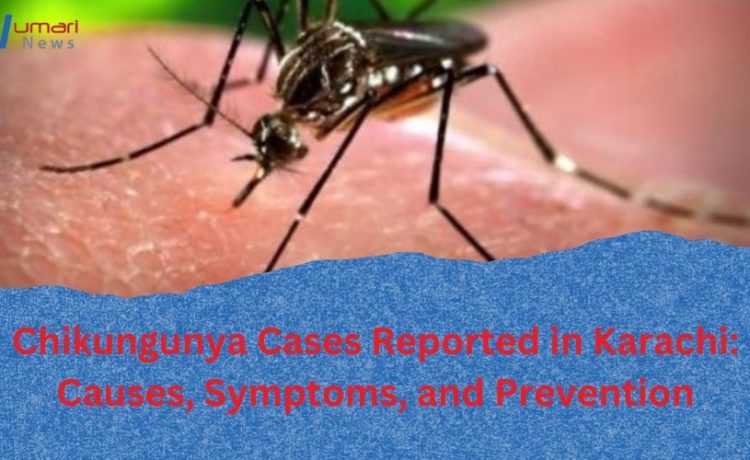The city of Karachi is once again facing a surge in chikungunya cases, a mosquito-borne viral disease that has been troubling the region for several years. The rising number of infections has raised concerns among healthcare authorities, highlighting the need for increased awareness and prevention measures. As urban areas with dense populations, chikungunya cases reported in Karachi, continue to be vulnerable to diseases transmitted by mosquitoes, understanding the causes, symptoms, and methods of prevention is crucial for managing outbreaks and protecting public health.
What is Chikungunya?

Chikungunya is a viral illness transmitted to humans primarily by Aedes mosquitoes, particularly Aedes aegypti and Aedes albopictus, the same species responsible for spreading other diseases like dengue and Zika virus. The name “chikungunya” comes from a word in the Makonde language, meaning “to become contorted,” which refers to the severe joint pain experienced by those infected.
While chikungunya is rarely fatal, it can cause debilitating symptoms and lead to long-term health problems, particularly for older individuals and those with preexisting conditions. The virus has been reported in various regions around the world, but in recent years, it has become more prevalent in Karachi due to the city’s climatic conditions, poor sanitation, and unplanned urbanization.
Causes of Chikungunya: Chikungunya Cases Reported in Karachi
Several factors contribute to the frequent Chikungunya outbreaks in Karachi. One of the primary reasons is the city’s high mosquito population, driven by favorable environmental conditions. Karachi’s warm, humid climate and heavy monsoon rains provide ideal breeding grounds for mosquitoes, especially in areas with standing water, such as open drains, puddles, and uncovered containers.
Moreover, the rapid urbanization of Karachi, coupled with inadequate waste management and poor drainage systems, has worsened the situation. Piles of garbage, stagnant water, and clogged sewers create perfect environments for mosquitoes to thrive. Additionally, the lack of public awareness about preventive measures and insufficient vector control efforts have allowed the mosquito population to grow unchecked, leading to repeated outbreaks.
Symptoms of Chikungunya
The symptoms of chikungunya typically appear within 2 to 12 days after being bitten by an infected mosquito. The illness begins with a sudden onset of fever, accompanied by severe joint and muscle pain. Other common symptoms include:
- Headache
- Fatigue
- Nausea
- Rash
- Swollen joints
The joint pain caused by chikungunya can be intense, often affecting the wrists, ankles, fingers, and toes. In some cases, the pain can persist for weeks or even months, leading to prolonged discomfort. Although most people recover fully within a few weeks, elderly individuals or those with underlying medical conditions may experience chronic joint pain and stiffness long after the infection has cleared.
Prevention Measures
Preventing chikungunya requires reducing mosquito exposure and controlling mosquito populations. The following steps can help in minimizing the risk chikungunya cases reported in Karachi:
- Remove Breeding Sites: To reduce breeding, it’s essential to regularly empty and clean water containers, flower pots, and buckets. Ensuring proper drainage and cleaning up standing water in the environment can significantly lower mosquito numbers.
- Use Mosquito Repellents: Applying insect repellent on exposed skin can help protect against mosquito bites. Repellents containing DEET, picaridin, or oil of lemon eucalyptus are effective in deterring mosquitoes.
- Wear Protective Clothing: Wearing long sleeves, pants, and socks can reduce skin exposure to mosquitoes, especially during dawn and dusk, when mosquitoes are most active.
- Use Mosquito Nets and Screens: Installing window and door screens and using mosquito nets at night can prevent mosquitoes from entering homes and biting while sleeping.
- Community Awareness and Action: Educating communities about the dangers of mosquito-borne diseases and encouraging collective action to eliminate mosquito breeding sites is crucial. Health authorities should lead awareness campaigns and ensure that fumigation efforts are regularly conducted in high-risk areas.
The recent rise in chikungunya cases reported in Karachi is a stark reminder of the city’s ongoing struggle with mosquito-borne diseases. While chikungunya is rarely life-threatening, its symptoms can be debilitating, making it essential to take proactive measures to control the spread of the disease. By addressing the root causes, improving waste management, and enhancing public awareness, Karachi can mitigate the impact of chikungunya and protect its residents from future outbreaks. Prevention remains the most effective way to combat this viral illness, requiring a collaborative effort from individuals, communities, and health authorities alike.







